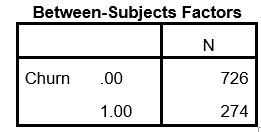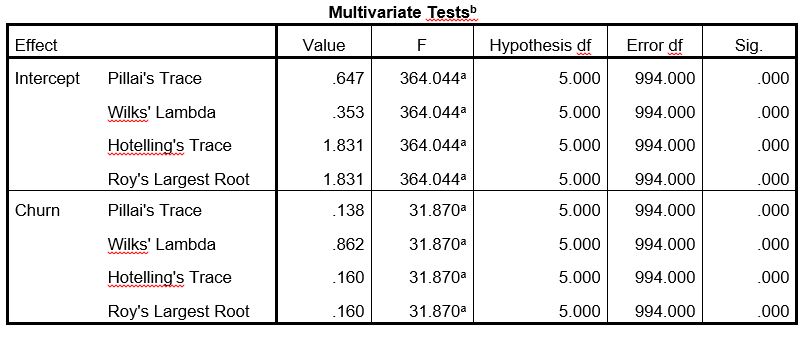 All papers examples
All papers examples
Disciplines

- MLA
- APA
- Master's
- Undergraduate
- High School
- PhD
- Harvard
- Biology
- Art
- Drama
- Movies
- Theatre
- Painting
- Music
- Architecture
- Dance
- Design
- History
- American History
- Asian History
- Literature
- Antique Literature
- American Literature
- Asian Literature
- Classic English Literature
- World Literature
- Creative Writing
- English
- Linguistics
- Law
- Criminal Justice
- Legal Issues
- Ethics
- Philosophy
- Religion
- Theology
- Anthropology
- Archaeology
- Economics
- Tourism
- Political Science
- World Affairs
- Psychology
- Sociology
- African-American Studies
- East European Studies
- Latin-American Studies
- Native-American Studies
- West European Studies
- Family and Consumer Science
- Social Issues
- Women and Gender Studies
- Social Work
- Natural Sciences
- Anatomy
- Zoology
- Ecology
- Chemistry
- Pharmacology
- Earth science
- Geography
- Geology
- Astronomy
- Physics
- Agriculture
- Agricultural Studies
- Computer Science
- Internet
- IT Management
- Web Design
- Mathematics
- Business
- Accounting
- Finance
- Investments
- Logistics
- Trade
- Management
- Marketing
- Engineering and Technology
- Engineering
- Technology
- Aeronautics
- Aviation
- Medicine and Health
- Alternative Medicine
- Healthcare
- Nursing
- Nutrition
- Communications and Media
- Advertising
- Communication Strategies
- Journalism
- Public Relations
- Education
- Educational Theories
- Pedagogy
- Teacher's Career
- Statistics
- Chicago/Turabian
- Nature
- Company Analysis
- Sport
- Paintings
- E-commerce
- Holocaust
- Education Theories
- Fashion
- Shakespeare
- Canadian Studies
- Science
- Food Safety
- Relation of Global Warming and Extreme Weather Condition
Paper Types

- Movie Review
- Essay
- Admission Essay
- Annotated Bibliography
- Application Essay
- Article Critique
- Article Review
- Article Writing
- Assessment
- Book Review
- Business Plan
- Business Proposal
- Capstone Project
- Case Study
- Coursework
- Cover Letter
- Creative Essay
- Dissertation
- Dissertation - Abstract
- Dissertation - Conclusion
- Dissertation - Discussion
- Dissertation - Hypothesis
- Dissertation - Introduction
- Dissertation - Literature
- Dissertation - Methodology
- Dissertation - Results
- GCSE Coursework
- Grant Proposal
- Admission Essay
- Annotated Bibliography
- Application Essay
- Article
- Article Critique
- Article Review
- Article Writing
- Assessment
- Book Review
- Business Plan
- Business Proposal
- Capstone Project
- Case Study
- Coursework
- Cover Letter
- Creative Essay
- Dissertation
- Dissertation - Abstract
- Dissertation - Conclusion
- Dissertation - Discussion
- Dissertation - Hypothesis
- Dissertation - Introduction
- Dissertation - Literature
- Dissertation - Methodology
- Dissertation - Results
- Essay
- GCSE Coursework
- Grant Proposal
- Interview
- Lab Report
- Literature Review
- Marketing Plan
- Math Problem
- Movie Analysis
- Movie Review
- Multiple Choice Quiz
- Online Quiz
- Outline
- Personal Statement
- Poem
- Power Point Presentation
- Power Point Presentation With Speaker Notes
- Questionnaire
- Quiz
- Reaction Paper
- Research Paper
- Research Proposal
- Resume
- Speech
- Statistics problem
- SWOT analysis
- Term Paper
- Thesis Paper
- Accounting
- Advertising
- Aeronautics
- African-American Studies
- Agricultural Studies
- Agriculture
- Alternative Medicine
- American History
- American Literature
- Anatomy
- Anthropology
- Antique Literature
- APA
- Archaeology
- Architecture
- Art
- Asian History
- Asian Literature
- Astronomy
- Aviation
- Biology
- Business
- Canadian Studies
- Chemistry
- Chicago/Turabian
- Classic English Literature
- Communication Strategies
- Communications and Media
- Company Analysis
- Computer Science
- Creative Writing
- Criminal Justice
- Dance
- Design
- Drama
- E-commerce
- Earth science
- East European Studies
- Ecology
- Economics
- Education
- Education Theories
- Educational Theories
- Engineering
- Engineering and Technology
- English
- Ethics
- Family and Consumer Science
- Fashion
- Finance
- Food Safety
- Geography
- Geology
- Harvard
- Healthcare
- High School
- History
- Holocaust
- Internet
- Investments
- IT Management
- Journalism
- Latin-American Studies
- Law
- Legal Issues
- Linguistics
- Literature
- Logistics
- Management
- Marketing
- Master's
- Mathematics
- Medicine and Health
- MLA
- Movies
- Music
- Native-American Studies
- Natural Sciences
- Nature
- Nursing
- Nutrition
- Painting
- Paintings
- Pedagogy
- Pharmacology
- PhD
- Philosophy
- Physics
- Political Science
- Psychology
- Public Relations
- Relation of Global Warming and Extreme Weather Condition
- Religion
- Science
- Shakespeare
- Social Issues
- Social Work
- Sociology
- Sport
- Statistics
- Teacher's Career
- Technology
- Theatre
- Theology
- Tourism
- Trade
- Undergraduate
- Web Design
- West European Studies
- Women and Gender Studies
- World Affairs
- World Literature
- Zoology
Multivariate Statistics, Essay Example
Hire a Writer for Custom Essay
Use 10% Off Discount: "custom10" in 1 Click 👇
You are free to use it as an inspiration or a source for your own work.

Abstract
This paper analyzed differences in spending behavior between individuals that “churned” (or switched phone service to another carrier) and individuals that stayed with the phone company. Statistical analysis found that there was significant variation between the two different types of consumers among the variables examined. Further studies should be done with post-hoc tests to examine differences between the two groups.
Introduction
This paper has two main aims. The first is to present a case study that is based upon analysis of a dataset of telephone users’ data to assess what factors (services) potentially play a role in the churn of customers. Multivariable analytical techniques will be used to see if variance exists between members who dropped service and those who kept service for a number of services. In addition to looking at spending data on certain services, the model also takes into account the customer service received by each customer. Second, this paper looks at four academic papers that use multivariable analytical techniques (MANANOVA) in a host of different academic questions. The paper concludes by looking at what factors are important in building a multivariable model to explore differences in variation.
Data Analysis
The “teleco” data set was analyzed using SPSS version 19 software. In order to address the question of whether there is a difference between churners and non-churners in the amount they spend on various telecommunication services, a one-way MANOVA analysis was conducted. The “churn” variable (a dichotomous) variable was identified as the “fixed factor” in the analysis. There were numerous dependent variables identified in the analysis: the monthly variables for long distance, toll, equipment, card use, and wireless.
The first step of the analysis was to acquire descriptive statistics on the independent variable in the analysis (churn) and the dependent variables As a product of the multivariate analysis performed, SPSS provided this output:
Figure 1:

Overall, roughly 38% of individuals in the data set churned (274/726). The analysis then went on to look at whether there were differences in service use among churners and non-churners. Additional descriptive analysis was then conducted to understand the basic metrics of dependent variables in the sample.
Figure 2

Overall, there does not seem to be problems with the variables examined in this data set. In order to understand the level of variance, a number of multivariate tests were conducted to assess the null hypothesis that there was no difference in service use between individuals that churned and individuals that did not churn.
The data was then analyzed using the multivariate analysis procedure in SPSS- the multivariate tests yielded the following output:
Figure 2:

There is a number of multivariate tests conducted that related to the MANOVA null hypothesis: The mean of the variables examined in the model are the same across groups. That is, that there is not a difference between the churn and non-churn groups with respect to the spending in the categories of long distance, toll calls, equipment, card use, and wireless. Looking at the results above, particularly looking at Wilks’ Lambda, the null hypothesis is rejected as all of the variables are highly significant. Thus, one concludes that there is a difference in the spending categories between churners and non-churners.
Finally, the analysis included a summary of the variables included in the analysis along with their parameter estimate and significance. All dependent variables related to spending were (highly significant) with predictive power for the difference between those who churned and did not churn.
Figure 3

Conclusion
This analysis has shown that there is a difference between individuals that choose to stay with a phone company versus those that do not (churn).
Literature Review
Overall, there were four papers included for consideration in the building of the model. Post and Versijp attempt to build a multivariate model that is built upon the concept of stochastic dominance rather than the traditional mean variance criteria typically used in financial portfolio building. In the process of building the portfolio model, the authors use a number of factors including standard deviation, skewness, kurtosis, size (alpha), power (beta).
Matolcsy, Booth, and Weider (2005) focus on building a conceptual model exploring the economic benefits of enterprise resource planning (ERP) systems. The authors track firms’ financial ratios over a two-year time period for firms that have ERP systems versus firms that don’t have ERP systems. Based on this data, the authors then conduct t-tests and MANOVA to assess whether performance differs between the firms based on the ERP systems. In addition to the univariate analysis performed, the authors also perform multivariate analysis focusing on the Pillias criterion (F- Test) significance test over four different four panels: from time -2 to time 0; from time -1 to 0; from time 0 to time 1; from time 1 to time 2.
Nie et al. propose a new way to model airport security. Instead of basing analysis on the fallacious assumption that each individual (and their bags) is equally probable as a risk to airport security, the authors propose a “risk area” system that classifies passengers in the airport based on their risk profile in several categories. The authors use classification theory from multivariable analysis in order to understand which passengers may be a threat to the airport. The main factors used in that analysis are the probabilities of correct classification and misclassification, which are then used to calculate the different probabilities of the passengers.
Hartley et al. (2006) attempt to understand what barriers that companies face that participate in e-auctions compared that those who do not use e-auctions. In order to explore the conceptual model, the authors conduct MANOVA analysis that focuses on the following factors: Mean, F Statistic, and p-value.
Overall, I think the most important factors in building a model are those of significance- a factor that was included in all of the author’s analysis above.
References
Buelens, M., Van De Woestyne, M., Mestdagh, S., & Bouckenooghe, D. (2008). Methodological issues in negotiation research: A state-of-the-art-review. Group Decision and Negotiation, 17 (4),
Matolcsy, Z. P., Booth, P., & Wieder, B. (2005). Economic benefits of enterprise resource planning systems: Some empirical evidence. Accounting & Finance, 45 (3), 439-456.
Nie, X., Batta, R., Drury, C. G., & Lin, L. (2009). The impact of joint responses of devices in an airport security system. Risk Analysis, 29 (2),
Post, T., & Versijp, P. (2007, June). Multivariate tests for stochastic dominance efficiency of a given portfolio. Journal of Financial & Quantitative Analysis, 42 (2), 489-515.

Stuck with your Essay?
Get in touch with one of our experts for instant help!

Time is precious
don’t waste it!
writing help!


Plagiarism-free
guarantee

Privacy
guarantee

Secure
checkout

Money back
guarantee

